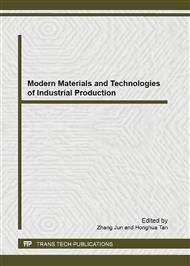p.370
p.375
p.380
p.388
p.394
p.401
p.407
p.413
p.417
3D Metallic Surface Acquisition for Inspection and Reading Character
Abstract:
This paper presents a real-time implementation of 3D acquisition for reading text and inspection the metallic surface based on light sectioning. A measurement is achieved with a standard low cost CMOS camera. Surface defects are modeled as deviations in the local relief from a smooth approximation of the surface. Discrete orthogonal bases are used to generate a smoothed global model of the surface structure. Modified discrete Tchebychev polynomials are used as orthogonal basis functions to perform least square approximations of the geometry. QR decomposition is used to obtain a unitary basis, minimizing the numerical effort when modeling surfaces. The result of test measurements on copper sheets in a production environment is presented to demonstrate the surface inspection. Another result is shown the readable character on the textured metallic surface after the proposed processing. A prototype system of the laser scanning instrument can be implemented in a production line as well.
Info:
Periodical:
Pages:
394-400
Citation:
Online since:
September 2013
Authors:
Keywords:
Price:
Сopyright:
© 2013 Trans Tech Publications Ltd. All Rights Reserved
Share:
Citation:


